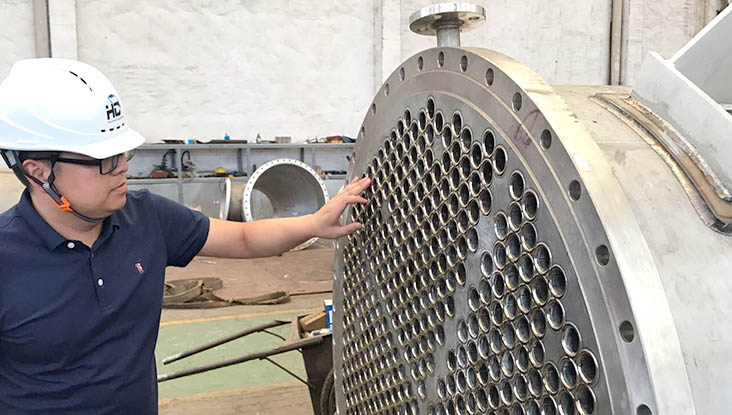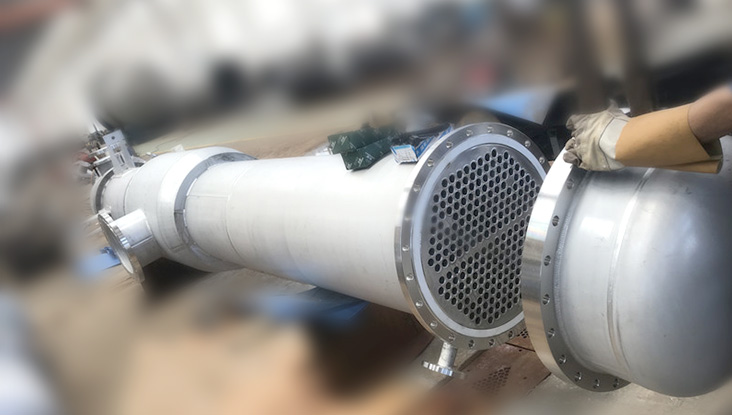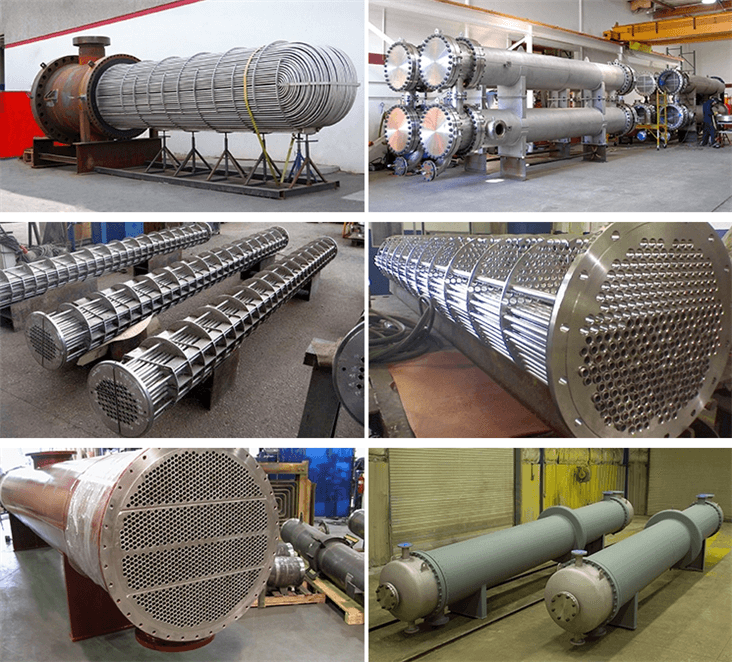Reasons and solutions for decrease in heat exchange efficiency of shell & tube heat exchanger
The heat exchange efficiency of shell and tube heat exchanger has a significant impact on the production process, which directly leads to the production and operating cost of the company. As we all know, the biggest influence factor of heat exchange efficiency is thermal resistance.

It is clear that when there is a temperature difference between two objects, the heat always flows from the high-temperature object to the low-temperature object, and this difference is the driving force of heat transfer. The amount of heat that can be exchanged per unit time is called the heat transfer rate, and the cold and hot wall surface through which the heat passes is called heat transfer surface. In the actual production, the heat driving force, heat transfer rate, and heat exchange area of the heat exchanger are all the values set in the design, and there will be basically no changes, but only the thermal resistance will change with the time of use. When the thermal resistance increases, the heat transfer capacity of the heat exchanger will be affected. For example, the dirt on the tube bundle can increase the thermal resistance and affect the heat transfer effect of the heat exchanger.

So how is the fouling on the tube bundle formed?
1)Suspended particles (such as fine sediment, dust, salt-tolerance) in the heat exchange medium are likely to form dirt when flowing through the surface of the heat exchanger.
2)The iron bacteria in the circulating water convert the water-soluble iron ions into water-insoluble hydrates, forming the precipitate in the water.
3)Cyanobacteria, green algae, diatoms, etc. grow on the metal surface in a lump, block the tubes of the heat exchanger, reduce the water flow, and thus reduce the heat exchange efficiency.
4)With the evaporation of water in the circulating system, the concentration of dissolved salts (such as carbonate, sulfate, silicate) in the water will increase. Some of them precipitate due to saturation, and then decompose on the heat exchange surface of the heat exchanger to form precipitates.

When fouling occurs in the heat exchanger tube bundle, how should we solve it? Cleaning measures for shell and tube heat exchanger:
1)Scrubbing
Remove the pipeline connected to the evaporator condenser. Remove the head, discharge the water in the water side of the cleaning circuit, attach the soft bristle brush to the 1/8" caliber tube, and drill some small holes in the brush end tube. Connect the other end of the tube to the faucet and clean each pipe thoroughly while rotating. Thoroughly wash away loose materials such as rust and sludge until there is no particle impurities by visual inspection.
2)Acid pickling
On the basis of the scrubbing, the acid cleaning tank, cleaning pump, and heat exchanger are formed into a closed loop. The hydrochloric acid solution is added to the acid cleaning tank, and the corrosion inhibitors of iron and copper are added to the solution to wash and decontaminate.
In addition to fouling, leakage may also be one of the factors that affect the efficiency of the transfer pin of the shell and tube heat exchanger. Users should find out the real reason and solve it. HC Petroleum Equipment has 16 years of practical experience in the manufacture of heat exchanger, please do not hesitate to contact us if you have any questions.
